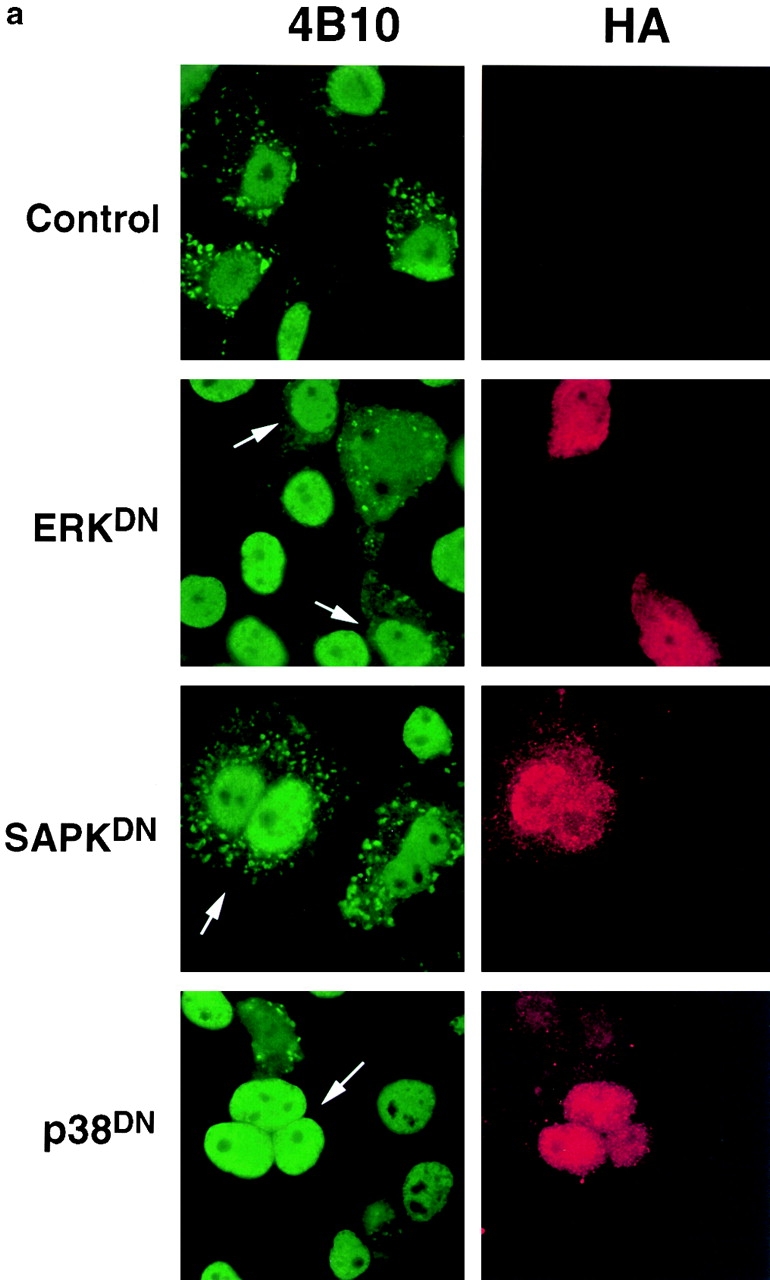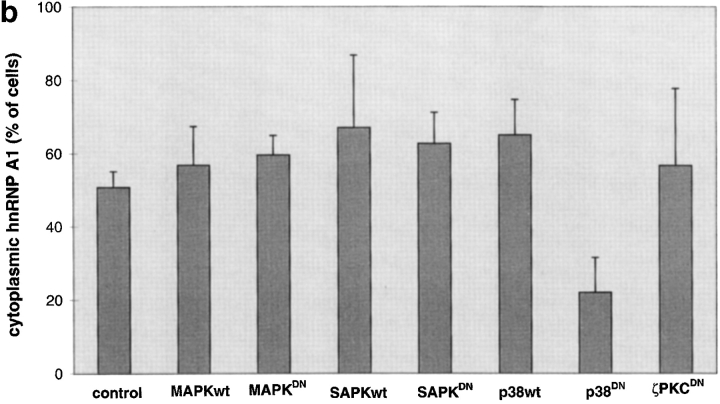Figure 4.
Role of p38 kinase in cytoplasmic relocalization of hnRNP A1 in cells exposed to OSM. (a) COS cells cultured on glass coverslips were transiently transfected with 5 μg of expression plasmids encoding HA-tagged versions of different kinases that mediate mitogenic and stress-activated signals (ERK, SAPK, and p38; data not shown) and their respective dominant-negative mutants (ERKDN, SAPKDN, and p38DN). At 24 h after transfection, the cells were either left untreated (data not shown) or were exposed to 400 mM sorbitol (OSM) for 2 h. The cells were then fixed and stained with anti-hnRNP A1 monoclonal antibody 4B10 and FITC-conjugated anti–mouse IgG (green) to detect endogenous hnRNP A1 protein, and with rabbit polyclonal anti-HA antibody and rhodamine-conjugated anti–rabbit IgG (red) to detect transiently expressed kinases. Essentially identical results were obtained in several independent experiments. (b) Histogram showing the percentage of cells displaying cytoplasmic hnRNP A1 after transfection of the respective HA-tagged kinase followed by exposure to OSM. (c) Histogram showing the percentage of cells displaying cytoplasmic accumulation of hnRNP A1 after transfection with 5 μg of the respective HA-tagged kinase followed by actinomycin D treatment (5 μg/ml) for 3 h.



